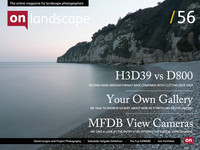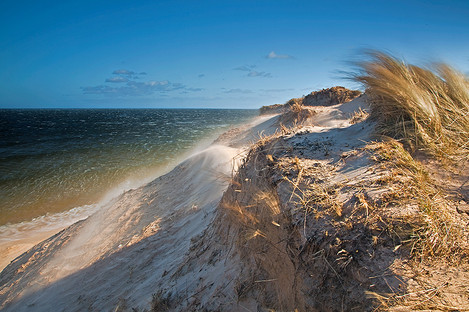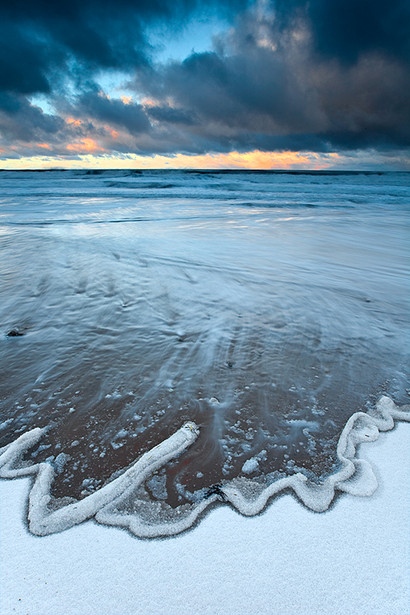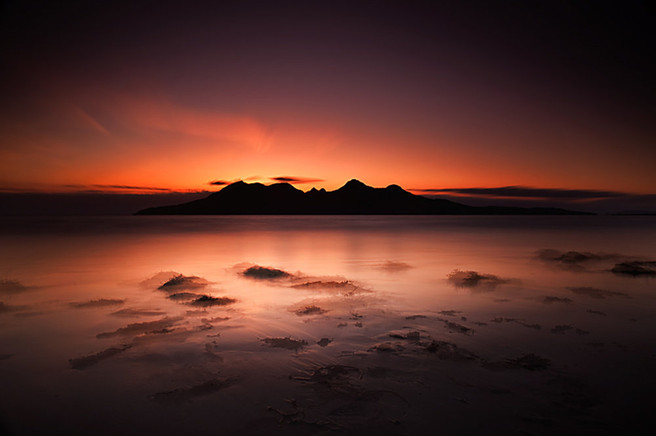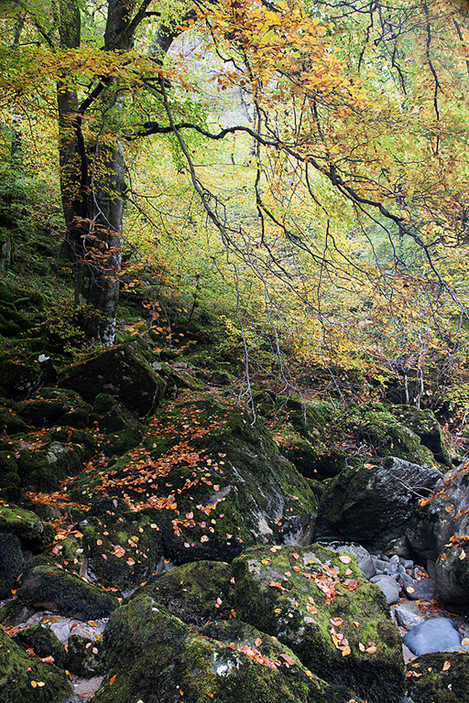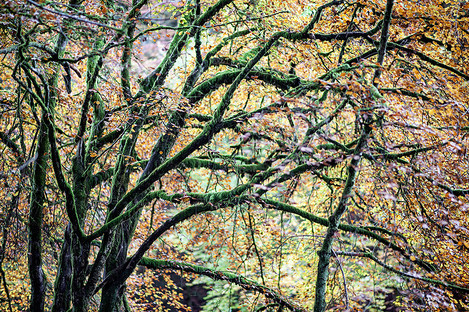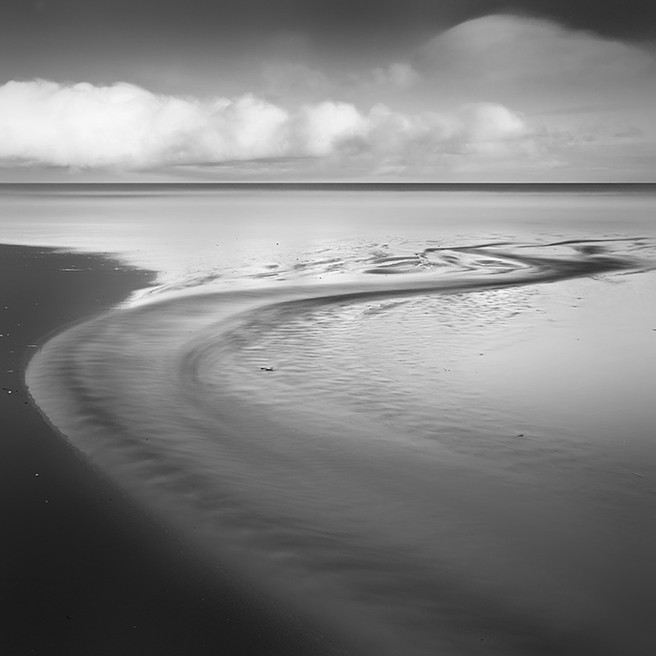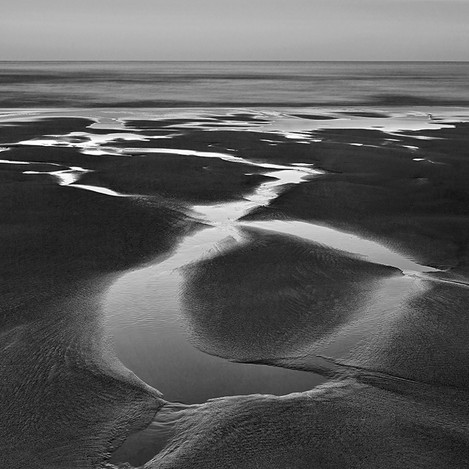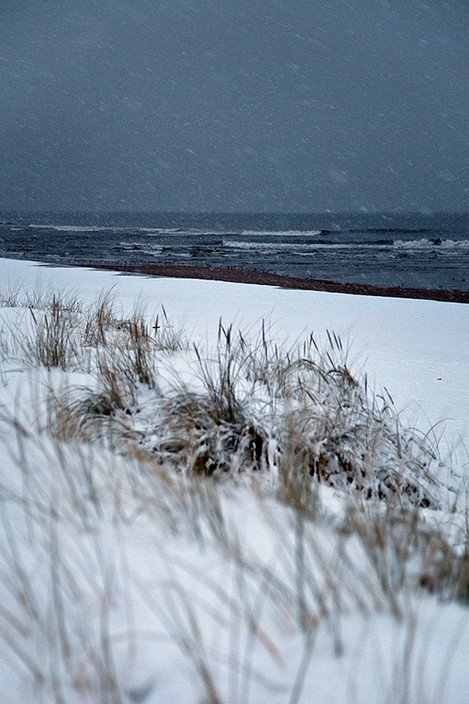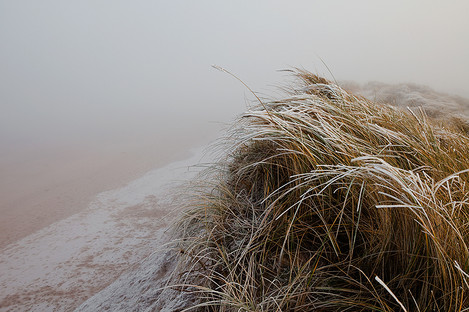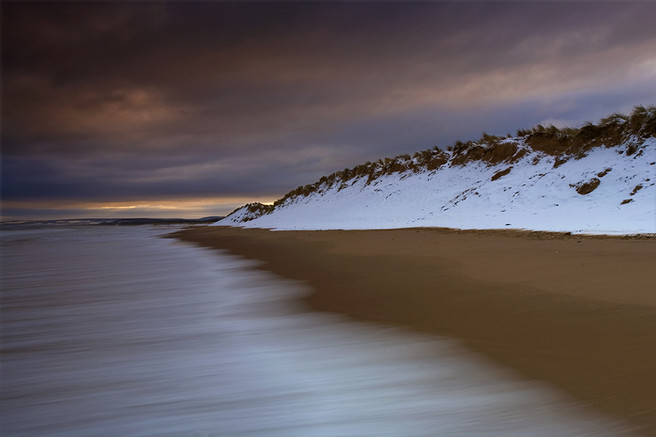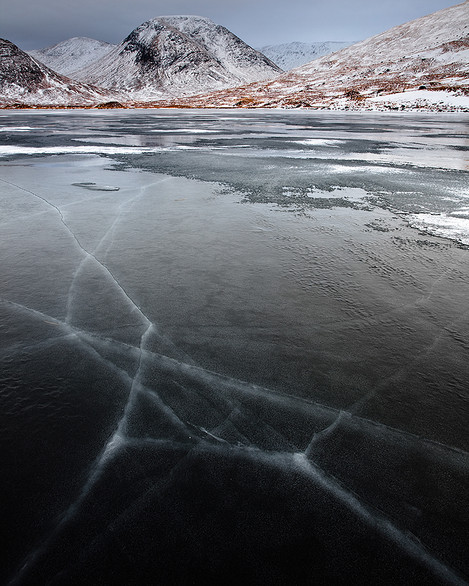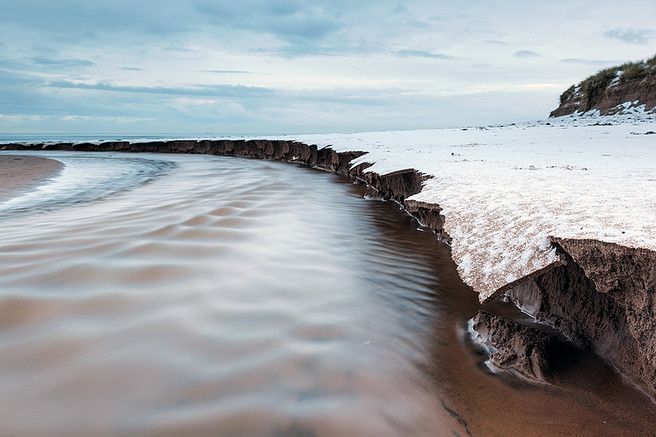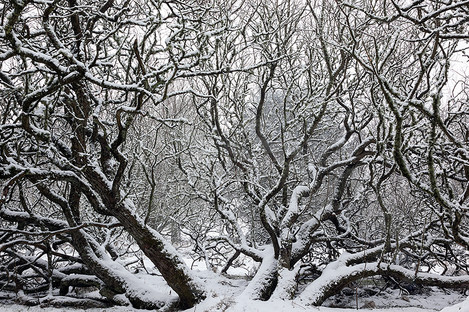Featured Photographer

Tim Parkin
Amateur Photographer who plays with big cameras and film when in between digital photographs.

David Langan
David Langan has been a reader for some time and won one of our early competitions to win an Olympus camera. He's also published a book on his local City of Aberdeen. We're also pleased that he's updated his website www.thenorthlight.com recently with some excellent pictures from the last few years.
Can you tell me a little about your education, childhood passions, early exposure to photography and vocation?
I was an easily distracted child and did not do that well at school. Every report card said that if I spent all the energy I use mucking about into learning I would do very well indeed! I left school to join the RAF as an aircraft technician in the discipline of Armourer. I spent 12 years in the RAF. After a 2 year stint as a pro photographer I am back in engineering working for a large oil and gas service company in Aberdeen building and testing down hole oil tools.
My childhood passion was football. However I loved getting outside and exploring and going on adventures. I moved from Glasgow to a little village in Argyll called Taynuilt when I was 12. It was then I was properly exposed to the great outdoors where we spent our time in the forests and hills (when we were not playing football!) Almost certainly this exposure gave me a great appreciation of nature, the landscape and the beauty of Scotland.
I was never a very artistic person; I am terrible at drawing/painting, not very good at writing and do not hold much interest in other art and craft genres. I never really had an interest in photography until I went to Randolph’s Leap (a beautiful gorge near Forres) with a friend. It had been snowing and I had a 3mp point and shoot digital camera with me. I tried to take a photograph of a beech branch arcing out over the River Findhorn laden with bronzed leaves. The resultant photograph was not how I thought it would turn out. A few days later I was browsing eBay at 3 in the morning (was suffering from insomnia) and a Canon 350D auction was ending at a silly price as no one else was up bidding on it. I won the auction and was the owner my first “proper” camera. Within 6 months I sold the camera and bought the original Canon 5D with all the usual landscape tog paraphernalia like grads, remote releases etc.
In most photographers lives there are 'epiphanic’ moments where things become clear, or new directions are formed. What were your two main moments and how did they change your photography?
The first moment is perhaps best described simply as Ward effect! (David Ward that is) I had been making photos for perhaps eighteen months/two years and was a little bit disillusioned with photography. I was a member of some forums and bored with the back slapping, mediocrity and pointlessness of the photographs (including my own photography!). It seemed to me I was struggling to do anything save for verbatim shots of the landscape. It left me feeling a bit empty and I felt I did not really have my own voice. I chanced upon Landscape Within in a book shop in Elgin. I was immediately interested as the messages inside were completely different than anything I had come across before. I bought it and read the whole book that night (first of many many readings as I tried to get to grips with it!). Soon after I bought Landscape Beyond and also went on L&L’s Glencoe workshop in 2009. Getting to talk to David about photography was completely inspirational. The books and the questions David raised, and the understanding that landscape photography is so much more the just illustration, undoubtedly gave me fresh impetuous and encouraged me to go out and do my own thing and find my own voice.
The second moment was something I wish I discovered right at the beginning – don’t listen to anyone about your own photography. There can be no doubt that I was making some pretty mediocre photographs when I started. This is fine as you need to start somewhere to progress. But family and friends had started waxing lyrical about my photographs. For me it reinforced that what I was doing was really good. In fact it was not. It is only obvious that they are going to praise what you do but it is not tempered with any constructive criticism at all. This was made all the worse because I was a member of a few back slapping forums.
Tell me about why you love landscape photography? A little background on what your first passions were, what you studied and what job you ended up doing
I think the reason that I love landscape photography is multi-faceted. Firstly, it gives me a reason to go out and experience the Scottish landscape and appreciate the beauty and wonder of it all. Secondly, I have always had an urge to create and photography is my only way to express myself in that way. This also ties in with the fact I am not a very social person so photography is a really important way for me to communicate myself.
The other factor, which I am constantly surprised hardly EVER gets a mention is that it is fun! The whole process from heading out the door to seeing a finished processed image is so enjoyable!
Could you tell us a little about the cameras and lenses you typically take on a trip and how they affect your photography.
Well I am not a very kit focused photographer to be honest. I have a Canon 5DMK2 and the 24-105. I tend to sell and swap additional lenses and currently having great fun with the astonishingly good value for money Samyang 85mm.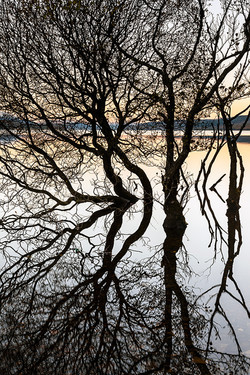 I also have 2 full sets of Lee hard grads and the Lee polarizer. I use a Benro carbon fibre tripod/ballhead and have the Tamrac Expedition 8 bag to carry it all in. I also carry around film cameras too. The one currently in my bag is the Agfa Isolette loaded with Agfapan.
I also have 2 full sets of Lee hard grads and the Lee polarizer. I use a Benro carbon fibre tripod/ballhead and have the Tamrac Expedition 8 bag to carry it all in. I also carry around film cameras too. The one currently in my bag is the Agfa Isolette loaded with Agfapan.
What sort of post processing do you undertake on your pictures? Give me an idea of your workflow..
I usually start off in Photoshop’s RAW editor and carry out basic global adjustments and lens correction. I only really play around with a few sliders and curves then it is off to Photoshop itself. In Photoshop I will perform local adjustments (curves, levels, saturation, contrast etc) using layers and either brush an effect in or out depending on circumstance. (I imagine much to the consternation of a lot of togs) I save the files as TIFFS and don’t keep the CR2 files. There is no good reason as to why I do this save that I have always done it this way and I don’t like change! So perhaps no LPOTY entry for me this year . . . . . .
Do you get many of your pictures printed and, if at all, where/how do you get them printed?
I have not printed that much over the years at all. For my Dark Beach exhibition Ilford printed my photographs on their Black and White Silver Gelatin RC photographic paper. For my colour photographs Salt of the Earth Giclee have done prints for me on photorag 308.
Over the last few years you've moved from photographs as primarily single images to photographs as part of larger projects. How did this come about and what difference does this make when you are deciding to go out and photograph and/or out on location?
I had started to become very dissatisfied with the single image. I started to question what the point of it was. Every photograph I make is not only me communicating with the landscape but also with any possible viewer of the finished photograph, so it should at least say something! What message could you possibly take from the single image except the photographer thinks the subject matter is interesting or beautiful or both! I would be doing myself a disservice if my one creative output was superficial and meaningless.
I have several projects on the go at the same time, some location based and some not. This means I can head out and make meaningful pictures anywhere. For example, I can head down to my local beach at Balmedie and depending on the conditions I could make a photo for the Dark Beach, Balmedie Stream, The Winter Coast, To The Sea or even the other projects I have not published yet. It really helps me make the most of the conditions.
I also have less impulse to travel around to make images. This pastime is probably the biggest reason the single (and the iconic/cliché) image gets so much coverage. Photographers love going to new places and grabbing shots. The attraction is understandable, especially considering that landscape photography always has some elements of discovery and exploration attached. However, getting to know a few local places really well and continually making photographs when one would assume all possibilities have been exhausted gives me the most pleasure of all, and has probably made me a better photographer too.
Tell me about the photographers that inspire you most. What books stimulated your interest in photography and who drove you forward, directly or indirectly, as you developed?
I probably see more photographs from people I follow on social networking sites than anything else. I love seeing photographs by guys such as Nigel Clark, Dav Thomas, Paul Arthur, Tim Parkin (slip me the fiver later!), Alistair Haimes, Paul Moon, Brian Preen, Adam Clutterbuck and Paul Morton to name but a very few.
But my photographic idol is Christopher Burkett. I am just completely blown away by his work. I have Intimations and Resplendent – both of which remain my most cherished of books. I am just waiting and praying he releases another book . . . .
Recently I have been very much inspired by Jeffrey Conley’s book Winter. It is a beautiful collection of photos, my favourite of which is Tree Cathedral. Other books I adore are Sacred Wood by Bae, Bein-U and also my David Muench books.
Tell me what your favourite two or three photographs are and a little bit about them.
This photograph was years ago and is still my favourite photograph by long way. Snow had fallen overnight and was planning to drive miles to Speyside. The beach was on my doorstep and was struck by how odd the snow looked on the beach. I walked onto the beach and tried to think of a way to include the snow clad dunes in the shot. I liked the vanishing point created by the sea and the beach and the contrasting stripes of white frothy waves, sandy beach, white dunes and dark broody sky. I set up the tripod in the intertidal zone and waited for waves to come up past me and timed the shot as best I could to get the line of the incoming wave to start from the corner of the frame.
It is not only the aesthetics of the photograph I like. This single photograph marks a change in so many ways. I realised the importance concentrating on local locations rather than traipsing around the countryside, it kicked off my long running Winter Coast project and my One Beach project.
I was spending a week in Glencoe area in December 2010 during the really REALLY bad winter weather. In fact the weather was too much. Everything was white or grey, a colourless landscape. Not helped by the fact that from dawn till dusk there was thick featureless clouds. I decided to do a bit of exploration instead of photography in the hope to find some nice locations for a possible future visit. After going through some maps I decided to park down the bottom of Loch Tulla and walk out through Glen Kinglass to Loch Dochard.
The walk should only have taken an hour or two but with knee deep, heavy camera backpack and constantly losing the path it took perhaps 3 or 4 hours. As I crested a rise the scene before me was incredible. The entire loch was frozen solid with giant fractures all through the ice. After resting in the little hut at the side of the path I ventured down to the lochside. To my amazement not only was the loch frozen, but it was frozen from top to bottom no water at all.
With this knowledge I headed out onto the loch (not too far mind you) and started framing shots with the amazing fractures in the ice. The weather had brightened slightly which helped lift the reds and oranges of the huge banks of dead bracken on the other side of the loch, giving relief from the almost monographic nature of the scene.
I was really excited with the photographs I had. However that excitement faded quickly with the realisation I had to walk all the way back in fading light!
If you were told you couldn’t do anything photography related for a week, what would you end up doing (i.e. Do you have a hobby other than photography..)
My main interest other than photography is running. I train usually 5/6 days a week and enter quite a few 5 and 10ks throughout the year. My 10K personal best is 38 min 3 secs which I am determined to beat this year! This September I am stepping up to race in my first half marathon too.
I am also a MASSIVE Partick Thistle fan.
What sorts of things do you think might challenge you in the future or do you have any photographs or styles that you want to investigate? Where do you see your photography going in terms of subject and style?
I am really unsure about the whole photographic style thing. Obviously, over a whole series of photographs someone might be able to see a style/similarity but I find it hard to believe that it is something a photographer can consciously create and manipulate at will. To me “style” is just the way a photographer communicates what he sees and for me it can only change embryonically.
I am still completely in love with expansive sandy beaches and forests. I hope that I can still think up interesting projects so that I can approach these subjects in different ways. The day I cannot think of something that interests and excites me and forces me to look at things differently is the day I hang up my camera!
Who do you think we should feature as our next photographer?
There is a Flickr photographer I keep an eye on called Brian Preen. He is someone completely bought into the idea of project photography. I also think Paul Moon and Paul Morton would be interesting featured photographers too.
Thanks to David Langan for his answers and you can see more of his images in the gallery below and more still at his website The North Light. You can also see his work as it happens at Flickr and keep track of news on Twitter.

